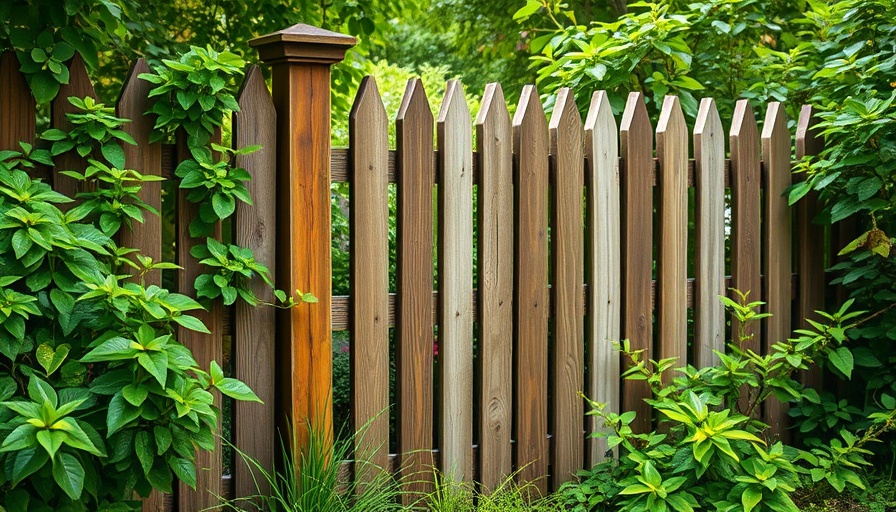
Understanding Fence Boundaries: What You Need to Know
Ever found yourself staring at a fence that's seen better days? Maybe the color seems dull or, heaven forbid, it's starting to lean a bit towards your side! If you've thought about giving that fence a fresh coat of paint, your mind probably came up with an essential question: Can I paint my side of the neighbor's fence? Before you grab that paintbrush, it's crucial to know the rules that govern landscaping and property boundaries.
The Law of the Land: Property Lines and Fences
Property lines determine ownership, which is vital in this situation. Typically, fences are positioned directly along these lines. If your neighbor owns the fence, painting your side without permission could land you in a legal mess.
Most local laws advocate for communication between neighbors. Check your county or municipal guidelines, as some regions have specific ordinances that outline what a homeowner can do with shared structures like fences.
Starting a Conversation: Why Communication Matters
Paint Wars, like those famous neighbor disputes that lead to sitcom-worthy situations, often begin with little misunderstandings. If you approach your neighbor ready for a friendly chat—perhaps with the offer of a cold lemonade—you may find the road to a headache-free fresh fence color is a simple conversation away. Express your desire to paint, and if your neighbor has concerns, you might even strike a deal to tackle the project together!
Peaceful Resolutions: What Happens If You Disagree?
Should your neighbor decline your request, it’s essential to respect their wishes. Ignoring this can lead to issues beyond just bad neighborly vibes; it could potentially involve homeowners' associations or legal action, depending on your locality's regulations. Unfortunately, painting over the neighbor’s dark green fence with your festive pink delight might feel satisfying initially, but it could open a Pandora's box!
DIYing with Style: Choosing the Right Paint
If you get the green light to proceed, it’s time to select your paint! When painting fences, choose weather-resistant, non-toxic solutions. Remember, a durable finish not only beautifies your outdoor space but ensures you won't be repainting on a windy afternoon just a few months later!
Future Considerations: Keeping Up with Neighbors
As you transform your fence into a reflection of your style, remember that fences don’t just stand alone. They're part of a larger neighborhood aesthetic. Avoid extreme colors or patterns that might clash with your surroundings. Aim for something that enhances your property while keeping the peace with the neighbors!
Final Thoughts: Embarking on Your Paint Journey
Ultimately, whether you can paint your side of the neighbor's fence depends primarily on property laws and neighborly dialogue. If done right, this paint journey can be a fantastic DIY home project that brightens up your yard and strengthens your community relationships.
In the world of home maintenance, painting your fence could either lead to a beautiful display of color or an emotional rollercoaster—choose wisely!
 Add Row
Add Row  Add
Add 



Write A Comment